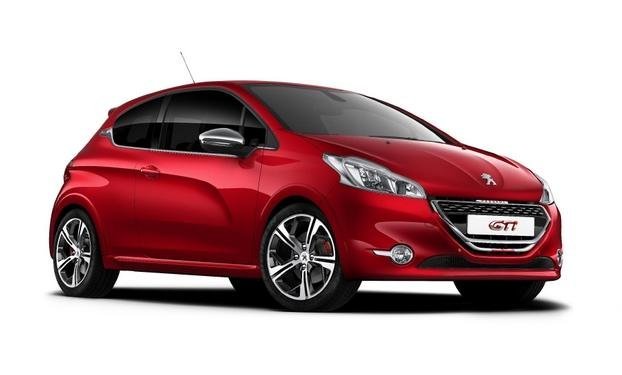PSA Launches New Brand Strategy for Peugeot and Citroen

Peugeot and Citroen cars chase a very similar customer base, which has been a problem for the French automaker for a long time. Presenting the automaker's 2012 financial results last month, CEO Philippe Varin admitted: "Our brands are too close."
In the future, Peugeot and Citroen will target two different customer groups, he said, while at the same time they will target what he called "profit pools."
The Peugeot brand will move more upmarket and aim to appeal to customers who want a traditional type of car. The 208 subcompact's high-performance GTi version and the new 2008 SUV-styled crossover are examples of how Peugeot can win higher profit margins per sale, Varin said.
Citroen will expand the brand's upscale DS line to earn bigger profits while mainstream Citroen models from the C1 to C5, the so-called C-line models, will be positioned slightly lower than the current cars. This means PSA has ditched its earlier, three-level strategy for Citroen to have DS, C and Entry models by merging the latter two.
Varin said Citroen will not become a low-cost brand while PSA brands boss Frederic Saint-Geours said the new positioning for Citroen's C-line models was decided back in 2009. Asked on the sidelines of the financial results press conference whether the new Citroens will be as profitable as the current cars, Saint-Geours said: "There is no reason they should be less profitable for PSA."
He declined to say whether Citroen cars will compete against models from Ford or Opel at the higher end of the volume segments or lower down with Skoda and Hyundai. "Our brand positioning is a new thinking, so we cannot refer to existing cars," he said.
Cars such as the recently launched C-Elysee sedan highlight what analysts have dubbed Citroen's new "cheap premium" brand positioning. The new C4 Picasso minivan will be another. The Technospace concept that debuts at the Geneva auto show previews the new minivan.
C-line Citroen models will offer a better cost of ownership and an optimized cost-to-function ratio, Varin said. They will have easy-to-use and practical technology while offering less mechanical refinement or raw power.
Peugeot will fill the slot between the DS sub-brand and the Citroen C-line models. The Peugeot 301, a sister model to the Citroen C-Elysee and similarly created as an affordable sedan for emerging markets, does not run counter to Peugeot's upscale move because it is a premium offering in the markets it serves when compared with rivals, PSA says.
Enough time?
Analysts wonder whether PSA has the time it needs to carry through the new strategy in a European market that is likely to be down for years to come. Another problem is that PSA's competitors are also pushing upscale, so the competition will be tough.
"We believe this strategy makes sense overall but carries substantial execution risk and could take many years to bear fruit," Fitch Ratings said in a statement on Feb. 25. "In particular, we are concerned that the existence of both entry-level/basic models and aspiring higher-end products within the two brands will not be easily understood and accepted by customers."
Bernstein Research said in a note to investors: "This may be the right thing to do for the long-run, but we don't need to quote John Maynard Keynes to know this may be academic if PSA runs out of liquidity and these products never get launched."
DIFFERENT MISSIONS
PSA CEO Philippe Varin recently outlined the new product strategies for Peugeot and Citroen like this:
Citroen stands for:
Fuel-efficient and environmentally friendly cars
Easy-to-use, less sophisticated technology
Purist design
Peugeot stands for:
Perceived quality and reliability
Elegant, dynamic designs that stand out from the crowd
Innovative driving experience and driving pleasure
Related News


